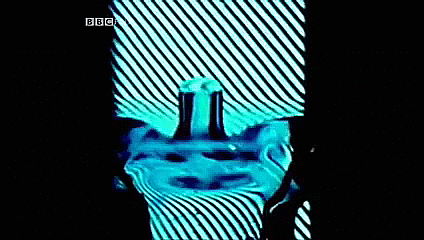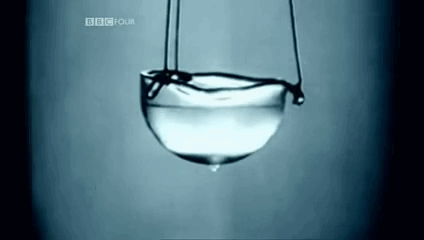50 Reasons It's Time For Smartphones In Every Classroom
50 Reasons It's Time For Smartphones In Every Classroom

“There are many ways to use a smartphone in the classroom, but it continues to be a touchy subject. Privacy, equity, bandwidth, lesson design, classroom management, theft, bullying, and scores of other legitimate concerns continue to cloud education’s thinking about how to meaningfully integrate technology in the learning process.”
More Posts from Ocrim1967 and Others


Superfluidity consists of an anomalous liquid state of quantum nature which is under a very low temperature behaving as if it had no viscosity and exhibiting an abnormally high heat transfer. This phenomenon was observed for the first time in liquid helium and has applications not only in theories about liquid helium but also in astrophysics and theories of quantum gravitation.
Helium only ends boiling at 2.2 K and is when it becomes helium-II (superfluid helium), getting a thermal conductivity increased by a million times, in addition to becoming a superconductor. Its viscosity tends to zero, hence, if the liquid were placed in a cubic container it would spread all over the surface. Thus, the liquid can flow upwards, up the walls of the container. If the viscosity is zero, the flexibility of the material is non-existent and the propagation of waves on the material occurs under infinite velocity.

Because it is a noble gas, helium exhibits little intermolecular interaction. The interactions that it presents are the interactions of Van der Waals. As the relative intensity of these forces is small, and the mass of the two isotopes of helium is small, the quantum effects, usually disguised under the thermal agitation, begin to appear, leaving the liquid in a state in which the particles behave jointly, under effect of a single wave function. In the two liquids in which cases of superfluidity are known, that is, in isotopes 3 and 4 of helium, the first is composed of fermions whereas the second is composed of bosons. In both cases, the explanation requires the existence of bosons. In the case of helium-3, the fermions group in pairs, similar to what happens in the superconductivity with the Cooper pairs, to form bosons.

Helium’s liquidity at low temperatures allows it to carry out a transformation called Bose–Einstein condensation, in which individual particles overlap until they behave like one big particle.
Superfluid in astrophysics
The idea of superfluids existed within neutron stars was proposed by Russian physicist Arkady Migdal in 1959. Making an analogy with Cooper pairs that form within superconductors, it is expected that protons and neutrons in the nucleus of a star of neutrons with sufficient high pressure and low temperature behave in a similar way forming pairs of Cooper and generate the phenomena of superfluidity and superconductivity.

The existence of this phenomenon was proven by NASA in 2011 when analyzing the neutron star left by supernova Cassiopeia A.
sources: 1, 2, 3 & 4 animation: 1 & 2




Couple goals










What Makes Something A Planet, According To An Astrophysicist?
“A dolphin may look like a fish, but it’s really a mammal. Similarly, the composition of an object is not the only factor in classifying it: its evolutionary history is inextricably related to its properties. Scientists will likely continue to argue over how to best classify all of these worlds, but it’s not just astronomers and planetary scientists who have a stake in this. In the quest to make organizational sense of the Universe, we have to confront it with the full suite of our knowledge.
Although many will disagree, moons, asteroids, Kuiper belt and Oort cloud objects are fascinating objects just as worthy of study as modern-day planets are. They may even be better candidates for life than many of the true planets are. But each object’s properties are inextricably related to the entirety of its formation history. When we try to classify the full suite of what we’re finding, we must not be misled by appearances alone.”
You’ve heard about the IAU’s definition, where in order to be a planet, you must pull yourself into hydrostatic equilibrium, orbit the Sun and nothing else, and gravitationally clear your orbit. You’ve also heard about the controversial new definition from geophysical/planetary science arguments, that planets should be based on their ability to pull themselves into a spheroidal shape alone.
Well, what about a third way: defining planets (and a whole classification scheme) based on astrophysical concerns alone? It’s time to start thinking about it!


Gif by Satiricon
Three Ways to Travel at (Nearly) the Speed of Light

One hundred years ago, Einstein’s theory of general relativity was supported by the results of a solar eclipse experiment. Even before that, Einstein had developed the theory of special relativity — a way of understanding how light travels through space.
Particles of light — photons — travel through a vacuum at a constant pace of more than 670 million miles per hour.

All across space, from black holes to our near-Earth environment, particles are being accelerated to incredible speeds — some even reaching 99.9% the speed of light! By studying these super fast particles, we can learn more about our galactic neighborhood.
Here are three ways particles can accelerate:
1) Electromagnetic Fields!
Electromagnetic fields are the same forces that keep magnets on your fridge! The two components — electric and magnetic fields — work together to whisk particles at super fast speeds throughout the universe. In the right conditions, electromagnetic fields can accelerate particles at near-light-speed.

We can harness electric fields to accelerate particles to similar speeds on Earth! Particle accelerators, like the Large Hadron Collider and Fermilab, use pulsed electromagnetic fields to smash together particles and produce collisions with immense amounts of energy. These experiments help scientists understand the Big Bang and how it shaped the universe!
2) Magnetic Explosions!

Magnetic fields are everywhere in space, encircling Earth and spanning the solar system. When these magnetic fields run into each other, they can become tangled. When the tension between the crossed lines becomes too great, the lines explosively snap and realign in a process known as magnetic reconnection. Scientists suspect this is one way that particles — for example, the solar wind, which is the constant stream of charged particles from the Sun — are sped up to super fast speeds.

When magnetic reconnection occurs on the side of Earth facing away from the Sun, the particles can be hurled into Earth’s upper atmosphere where they spark the auroras.
3) Wave-Particle Interactions!

Particles can be accelerated by interactions with electromagnetic waves, called wave-particle interactions. When electromagnetic waves collide, their fields can become compressed. Charged particles bounce back and forth between the waves, like a ball bouncing between two merging walls. These types of interactions are constantly occurring in near-Earth space and are responsible for damaging electronics on spacecraft and satellites in space.

Wave-particle interactions might also be responsible for accelerating some cosmic rays from outside our solar system. After a supernova explosion, a hot, dense shell of compressed gas called a blast wave is ejected away from the stellar core. Wave-particle interactions in these bubbles can launch high-energy cosmic rays at 99.6% the speed of light.
Make sure to follow us on Tumblr for your regular dose of space: http://nasa.tumblr.com.
Mis conversaciones favoritas son aquellas que se tienen con el lápiz y el papel.
-Zufriedenheit.










(Source)
WE NEED TO ACT NOW







The role plastic products play in the daily lives of people all over the world is interminable. We could throw statistics at you all day long (e.g. Upwards of 300 MILLION tons of plastic are consumed each year), but the impact of these numbers border on inconceivable.
For those living on the coasts, a mere walk on the beach can give anyone insight into how staggering our addiction to plastic has become as bottles, cans, bags, lids and straws (just to name a few) are ever-present. In other areas that insight is more poignant as the remains of animal carcasses can frequently be observed; the plastic debris that many of them ingested or became entangled in still visible long after their death. Sadly, an overwhelming amount of plastic pollution isn’t even visible to the human eye, with much of the pollution occurring out at sea or on a microscopic level.
The short-lived use of millions of tons of plastic is, quite simply, unsustainable and dangerous. We have only begun to see the far-reaching consequences of plastic pollution and how it affects all living things. According to a study from Plymouth University, plastic pollution affects at least 700 marine species, while some estimates suggest that at least 100 million marine mammals are killed each year from plastic pollution. Here are some of the marine species most deeply impacted by plastic pollution.
Sea Turtles
Seals and Sea Lions
Seabirds
Fish
Whales and Dolphins

–> GET HERE THE OCEAN SEA PIN <–

–> GET HERE THE A LITTLE MORE KINDNESS A LITTLE LESS JUDGEMENT PIN <–

–> GET HERE 4 PACK GALAXY FISHES PINS <–

–> GET HERE THE IT’S A SMALL WORLD AFTER ALL PIN <–

–> GET HERE THE SEA LOVERS PIN <–

–> GET HERE THE IF YOU’RE LOOKING FOR A SIGN THIS IS IT PIN <–

More than ever, the fate of the ocean is in our hands. To be good stewards and leave a thriving ocean for future generations, we need to make changes big and small wherever we are.
Every purchase supports Ocean Conservation. We give a portion of our profits to Organizations that bravely fight for Marine Conservation.











This Is How The Universe Changes With Every New Year That Passes
“With an 13.8 billion year lifetime so far, the Universe has certainly been around for some time. While it may seem to change only imperceptibly on human timescales, the fact remains that these changes are real, important, and cumulative. If we look closely and precisely enough, we can observe these changes on timescales as small as a single year.
These changes affect not only our home world, but our Solar System, galaxy, and even the entire Universe. We are only in the beginning stages of exploring how the Universe changes over time and what it looks like at the greatest distances and faintest extremes. May the 2020s mark the decade, at long last, where we pool our efforts as a species into the endeavor to uncover the greatest cosmic secrets of all.”
With every year that goes by, tiny, imperceptible changes occur in our physical Universe that really add up over time. The Earth’s rotation is slowing, the Moon is spiraling outwards, the Sun is heating up and new stars are forming. On a cosmic scale, the Universe is expanding and getting cooler, and more galaxies are becoming visible while fewer stars are capable of being visited.
This is how the Universe changes with each new year that passes, and we can quantify the effects today!





Read Full Article Here: 6 Tricks to Staying Positive - Psych2Go
Follow @psych2go for more
-
 mary-beauty-god-blog liked this · 7 years ago
mary-beauty-god-blog liked this · 7 years ago -
 ocrim1967 reblogged this · 8 years ago
ocrim1967 reblogged this · 8 years ago -
 ocrim1967 liked this · 8 years ago
ocrim1967 liked this · 8 years ago -
 edtechnews reblogged this · 8 years ago
edtechnews reblogged this · 8 years ago